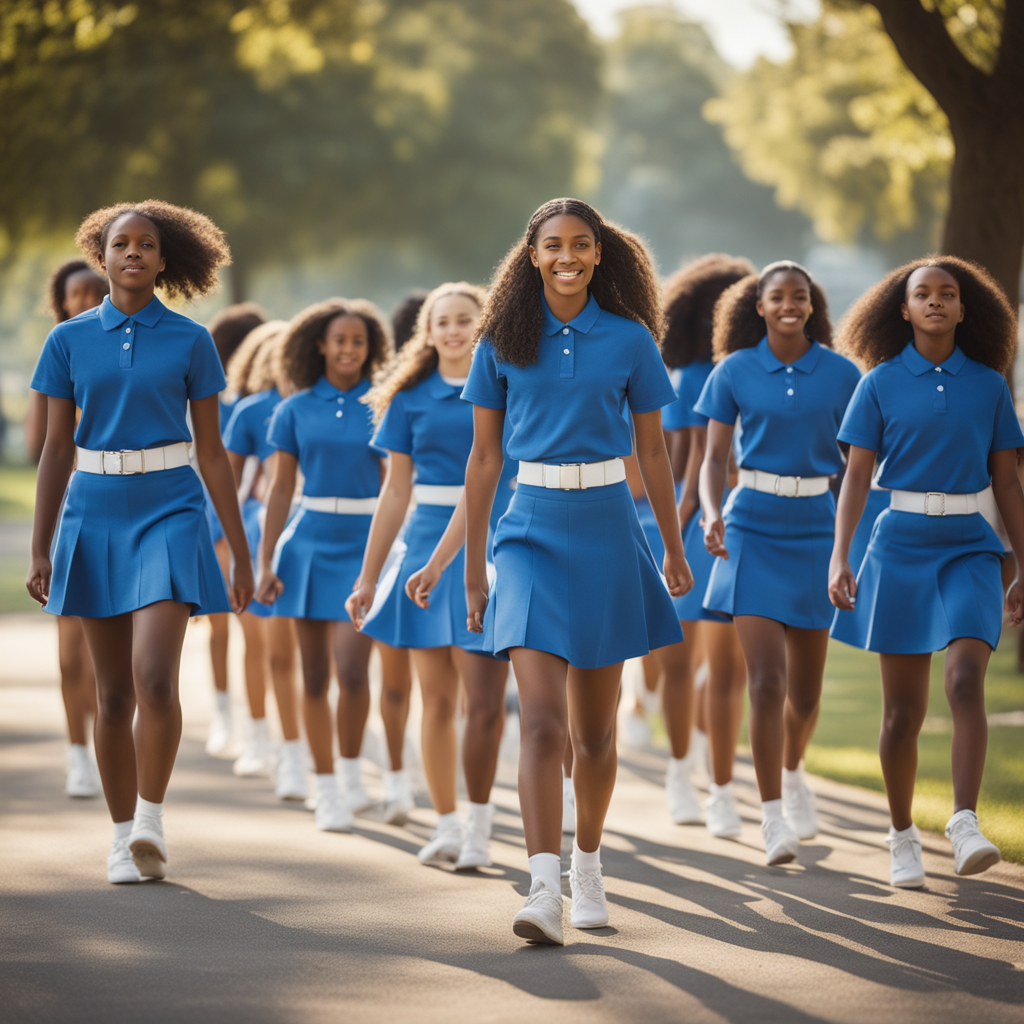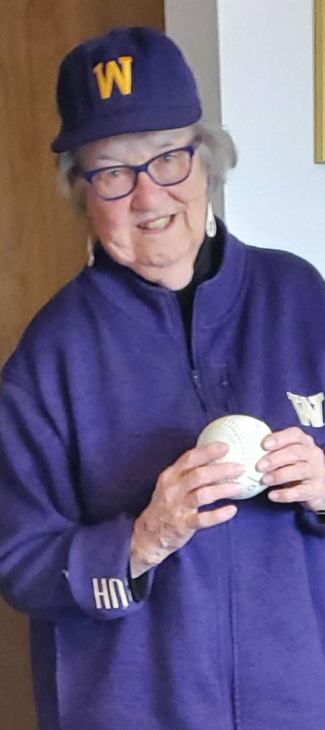Part 3 –
What I Did to Solve My 2 Dilemmas –
Read the stories of the dilemmas. Part 1 and Part 2 can be found here.
Dilemma A – As Teacher – The Solution
My choices in the dilemma:
1. Listen to the advice of the other Teachers and not allow the participation of the “bad” girls. OR
2. Treat the “bad” girls as I would any other student. And take my chances!
I CHOSE TO TREAT THE SO-CALLED “BAD” GIRLS AS I WOULD ANY OTHER STUDENT.
As the year progressed the so-called “bad” girls kept coming to my classes regularly and participating in class activities.
Whenever one would be missing I would ask another member of the group where that missing girl was. Was she OK? Was she sick? Was her family OK? And then on her return I would follow up with questions that would let me know how she and her family were doing.
At times I would talk with one of the girls alone if she seemed particularly sad or unhappy.

I always greeted all of my students when they arrived for class and said goodbye as they left. I wanted them to know they were all a real part of our class. Yes, that’s what I did with all of my students.
We were a group together working and playing together.
The so-called “bad” girls were always very helpful and eager to participate in whatever help was needed.
When I was given the assignment to develop a girls drill team some 10 or 15 girls came together to try out the new activity. And yes, the “bad” girls came along with all of the others.
When I suggested we should have a committee to decide what marches to use the special girls volunteered immediately. They were very good at designing marching patterns and teaching the other girls how to march correctly.
I decided my job was to make sure the tools they needed were available and then stand by to watch them work! When carrying flags while marching was suggested the “special” girls said that I did not have to worry because they knew how to do that, too and could teach the others. So I bought the flags – and the girls did the rest!

One Monday morning when I got to school, I realized that someone had painted various swear words on the shower house walls – “To hell with Mrs. Cheal.” “F….k, Mrs. Cheal.” – and some others that I don’t remember. Since I had no idea what to do with that issue, I just ignored it and went on teaching my other classes. When students would ask me what I was going to do about it I usually answered by saying, “Oh, I’ve seen those words before and they don’t mean anything to me.”
When it came time for physical education class that day most of the “bad” girls were not there. When I asked the remaining “bad” girl student where the others were her response was, “Don’t worry, Mrs. Cheal. They are taking care of things and it will never happen again!” – and it didn’t!
I never knew who did any of the painting nor who cleaned it up. But the shower house was back to normal by the end of the day!
Some months after the beginning of school the teachers, who had warned me against those “bad” girls, asked what I had done to them. Now they were coming to classes regularly, studying, and getting good grades.

“What did you do?” They asked.
I didn’t know then – but now I know – the so called “bad” girls and I connected.
Yes, connection is the deep sense of being seen, heard, and valued.
Those “bad” girls were now participating very successfully in school. They were no longer “bad” girls.
I still remember that day when with smiling faces and many good wishes the former “bad” girls presented me with their going away gift – a softball with their names and expressions of kindness written all over it. Those names and good wishes are faded now but still visible – after more than 60 years!
And I’m sure that our warm feelings of connection will last forever!
Dilemma B – As Program Analyst – The Solution
If you recall my choices were:
1. Go home immediately and make arbitrary administrative budget changes and their descriptions for any programs other than Head Start. OR
2. Stay in the community overnight, setting up a meeting with Rose for the next morning to try to work out an amicable solution. And believe the possible!
I CHOSE TO STAY IN THE COMMUNITY OVERNIGHT SETTING UP A MEETING WITH ROSE FOR THE NEXT MORNING TO TRY TO WORK OUT AN AMICABLE SOLUTION. AND BELIEVE THE POSSIBLE!

The next morning Rose arrived at the agreed upon time and after we greeted each other we both sat down. I described to her how the meeting would be structured – The plan I laid out was for her to tell me anything she wanted about our working together, my questioning responses to her frequent requests, her request to my boss to transfer me to another job or- anything else she wanted to say. She made no objection and started to talk.
I sat and listened intently, using body language that she would be able to interpret as my genuine interest in what she was saying. I refrained from making any comments about whether I agreed with her accusations or not. I said nothing while she was speaking and kept silent, not correcting any inaccuracies or defending myself at any time. Just listened.
After some 10 minutes or maybe more she paused and I asked if she was finished.
When she said “Yes”. I said, “Now it’s my turn.”
As I talked, she followed my example by listening quietly and intently and never defending herself or objecting to any of my words or ideas. I described my job requirements as her Program Analyst. As I recall, I also praised her for wanting to serve teenage children in her community and explained that legally she would be in trouble if she did that with Head Start funds. My responsibility was to make sure she did not get into legal trouble and to find ways to help her if and when that was needed. That was the most important issue I wanted her to understand. I acknowledged that she was more knowledgeable about her community than I was and whereas she knew the greater needs that existed there. The message I needed her to hear was that she also must remember that money received for specific programming for eligible children must be used for those purposes only. The money came with restrictions and it was my desire was to keep her out of trouble.
When I had finished what I wanted to say we stood up, shook hands, and she went back to her program. I went back home.
WHAT HAPPENED WAS AMAZING!
No longer did she write to my boss asking for my removal as her Program Analyst but instead she wrote many times praising me for listening to what she had to say. She often mentioned in her correspondence that she would like it if he would make sure she continued to have me as her Program Analyst. She knew that I understood her community and what she was trying to do for the kids there. But she knew she would have to do that in a different way than she had originally planned.
From then on, she and I worked really well together! We didn’t always agree with what the other wanted to do but we talked about it and we always came to agreements that both of us understood and were very willing to make the changes needed within acceptable boundaries.
Later after I had left work with the Federal Government, and I was diagnosed with a serious illness the one ‘get well card’ that I received from former work colleagues was from – Rose!
We Had Connected!
Rose and I had connected through the deep sense of being seen, heard, and valued.
Life was not going to be the same for us because we had established that connection. Our working relationship had radically changed so that really working together we were able to establish very good programs.
Some Further Thoughts
As successful as I feel these two examples turned out, I also learned a lot about working with people, about connections, about how connections can bring about much better work and it’s much more fun!
As you think about how to develop connections with people or to make the ones you currently have stronger, I’ve listed a few ideas that I used to solve the problems I described in these stories.
Consider trying them out. Use them and see if they are helpful for you –
Let me know if your connections become more meaningful.
I tried to:
- Keep All of the conversations were respectful, holding the intention of being helpful to the other.
- Genuinely be interested in the person I was working with – not just in the work we were doing together but interested in them as people.
- Actively listen, not being distracted by whatever may have been happening around us at the time.
- Give the person I was in conversation with plenty of opportunities to tell me what was on their minds – to tell their stories.
- Particularly, as in the last example, I asked Rose to speak first. I listened without interruption. After she had completed what she wanted to say, I took my turn. Rose, in turn, followed my example completely and did not interrupt my speaking.
I want the best for you – GOOD LUCK IN YOUR CONNECTING!
Need more inspiration? Listen in to this Ted Talk Rita Pierson: Every Kid Needs a Champion
[Images used in the articles are representations created using AI graphics.]

